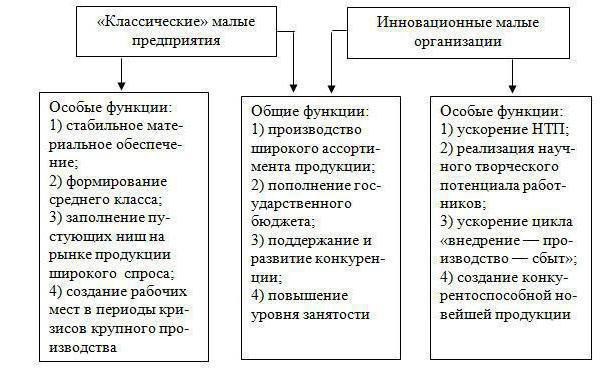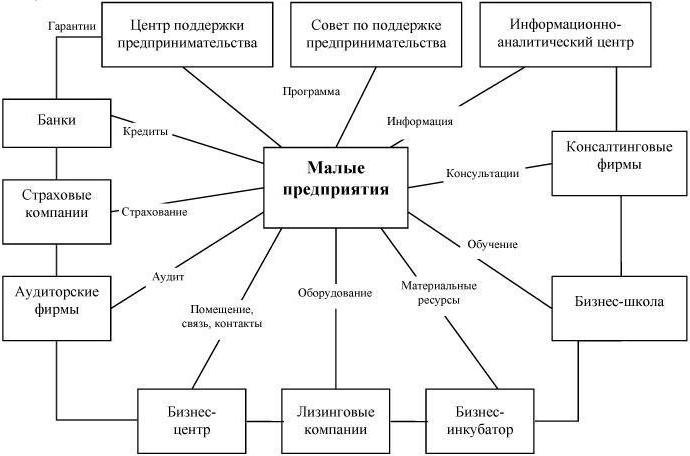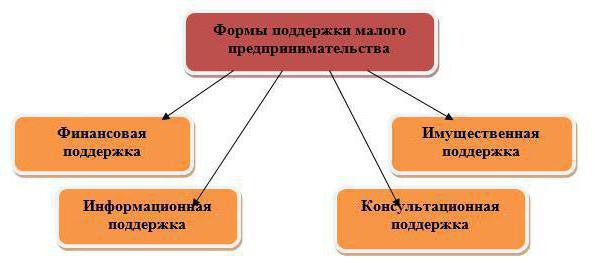The 2015 Federal Law and its amendments establish that small and medium-sized enterprises are any business company registered in the register, a partnership, a production or consumer cooperative, an individual or a farm. In order to attribute any of these species to a business entity, compliance with certain conditions must be identified.

According to the Constitution
The constitutional principle underlying the sphere of the economy is freedom of economic activity, where small and medium-sized enterprises are the right of every citizen, if this economic activity is not prohibited.
It should be independent and usually aimed at making a profit from the sale of goods, the use of property, the provision of services or the performance of work. Small and medium-sized enterprises are an active factor in market competition, where the basic principle is the search for needs and their satisfaction.
Amount of workers
The criterion for classifying a particular enterprise as small or medium is the number of staff both full-time and contracted. So, small enterprises include those for which the authorized capital of charity or other foundations, religious and public organizations, constituent entities of the Russian Federation and the Russian Federation as a whole does not exceed a quarter, that is, twenty-five percent, and in which the number of employees is precisely determined.
So, in transport, in construction and in industry, small and medium-sized enterprises is the number of employees not exceeding one hundred people, in the scientific and technical field and in agriculture - no more than sixty, in wholesale trade - fifty, and in retail - up to thirty man, so is in the domestic service. In other sectors, the number of employees should not exceed fifty people. Subjects of small and medium-sized businesses - individuals who are most often engaged in entrepreneurial activities without forming a legal entity.

Taxes
If the company employs less than fifteen people, many benefits apply to it. Small and medium-sized enterprises are taxed on the simplified system of taxation, reporting and accounting. For this, there are no criteria for the type of activity carried out, in any case, this enterprise will be considered small.
But the amount of income greatly affects the possibility of classifying this type of business as small or medium. Attribution to this type may be provided that the revenue from the work performed, the sale of goods or services in the past reporting year (four quarters) did not exceed the amount of the amount of a thousand times the minimum wage.
Support
The development of small and medium-sized enterprises is stimulated by a variety of tax benefits, the provision of leasing equipment, and soft loans. In the Russian Federation, there are several areas of such support.
1. An infrastructure is being formed, as well as a register of small and medium-sized enterprises, which is uniform for all.
2. Preferential conditions are created for the use by such entities of the state material, technical, financial, information resources, technologies and scientific developments.
3.A simplified procedure is being established for registering small and medium-sized enterprises in the register for start-up businessmen.
4. Organized support for foreign economic activity, including the development of their scientific, technical, trade, information, production relations with foreign countries.
5. Organized advanced training, training, retraining for small and medium enterprises.
6. State and municipal support programs for entrepreneurs are developed and applied, and these programs are implemented annually with budgetary funds - both the local budget and the budgets of the Russian Federation and its constituent entities.

From the history
The existence of small business in the country began in 1988, and small state-owned enterprises were also attributed to it, where the number of permanent employees did not exceed one hundred people.
In 1990, the USSR Council of Ministers decided that small enterprises should be considered those that have a collective number of no more than: retail trade - fifteen people, non-production sphere - twenty-five people, industrial non-industrial sphere - fifty people, scientific and technical services - one hundred people , industry - two hundred people.
The volume of economic turnover was also taken into account, although its value did not have time to establish itself. And today, the classification of enterprises as a type of business in terms of the number of employees has been preserved (Federal Law "On Small and Medium Enterprises").

Law
In 2007, Federal Law No. 209 was issued, which determined which entities belong to these types of businesses. A state unified register of small and medium-sized enterprises was created. This included all commercial organizations and consumer cooperatives, except for municipal and state enterprises, legal entities and individuals who are individual entrepreneurs, as well as peasant farms.
The conditions were as follows: legal entities should have a total share of the Russian Federation and its subjects, foreign citizens and legal entities of other states, public organizations, municipalities, charitable or other funds in the authorized share capital or mutual fund of not more than twenty-five percent, that is quarters of total capital. This did not apply to the assets of investment joint stock funds, as well as unit closed investment funds. In this case, the enterprise had the right to be included in the single register of small and medium-sized enterprises.

Other conditions
In the number of employees of enterprises, changes also appeared. For the reporting period (calendar year), the average number of employees should not go beyond the limit values in each of the categories: for medium-sized enterprises - from one hundred to two hundred and fifty people inclusive; and for small ones - up to one hundred people, in microenterprises - up to fifteen people.
According to the proceeds from the sale of services, works or goods, not taking into account the value added tax, that is, the book (residual) value of tangible assets and fixed assets for the same period should not exceed the limits established by the Government of the Russian Federation according to categories. Limit values are set once in five years, taking into account the data of constant monitoring of the activities of enterprises by statistics (Federal Law "On the Development of Small and Medium-Sized Enterprises"). In 2016, significant amendments and changes were introduced to this law (222-ФЗ).
Categories
All subjects are divided into categories according to the values of the conditions that are described above. New enterprises or organizations, newly registered individual entrepreneurs, or peasant farms belong to small or medium-sized businesses, if the indicators from the moment of registration of the enterprise do not exceed the limit values.
On a small or micro-enterprise, the number of employees on average per calendar year is calculated, taking into account those who work under the contract or part-time, as well as workers in branches, representative offices or other separate divisions of this enterprise.Revenues after the sale of services, works or goods is determined for the calendar year in the order that complies with the Tax Code of the Russian Federation. The book value of assets (residual - fixed assets and intangible assets) is determined in accordance with the legislation of the Russian Federation on accounting. The Federal Tax Service (Federal Tax Service) keeps records of the Unified Register of small and medium-sized businesses.

Documents
Information about individual entrepreneurs and legal entities is entered into the Unified Register if they meet the above conditions, and are also excluded from this register if circumstances have changed during the monitoring period and the enterprise does not meet this category under the conditions. Documents for making or removing an enterprise from the registry need the following.
1. Information already in the Unified State Register.
2. Information provided accordingly to the legislation of the Russian Federation on taxes and fees, on the number according to the average list for the previous calendar year, information on income received after carrying out activities for the same period, information on the application of certain tax regimes.
3. Information on suppliers (clause 2, article 6 No. 408-FZ of 2015).
4. Information on making small and medium-sized businesses in the Unified Register.
The timing
Filling in the Unified Register is carried out in order to provide relevant information by suppliers to the Federal Tax Service. This information is provided at a certain time strictly until the fifth of July annually and reflects the status for the reporting period until the first of July of the current year. These documents must be submitted in electronic form, signed by a qualified enhanced electronic signature, with the obligatory use of the website of the Federal Tax Service of the Russian Federation, officially working on the Internet. There is a special electronic service for transmitting information by suppliers.
The entire list of joint-stock companies, formed in a certain order, which is established by the government of the Russian Federation, is provided by exchanges if shares are circulated on the securities market, and also if they belong to shares of an innovative high-tech sector of the economy.

Support programs
Since 2005, the Ministry of Economic Development of the Russian Federation has been implementing a special program to provide subsidies for providing state support to medium and small enterprises in the regions. Finances come from the federal budget. In 2014, a corresponding decree of the Government of the Russian Federation was adopted regarding this program, and annually in this regard, orders of the Ministry of Economic Development of the Russian Federation are issued. Farms are also covered by this program.
Further, in the regions, the received target funds are distributed through a competition for the implementation of those activities that are provided for by regional programs. The prerequisite is that the regions will definitely fund these projects. This approach attracts financial resources and stimulates a more active policy of supporting the activities of small and medium-sized entrepreneurs.
Participation
This program involves absolutely all regions of the country. Various measures are envisaged to support the development of small and medium-sized businesses. This is especially true for beginning businessmen, youth entrepreneurship.
An advisory and informational support infrastructure is being developed for enterprises engaged in the production of services, work, goods, special attention is also paid to industrial production, development and implementation of innovations. The field of folk art, handicraft, ecological and rural tourism does not stand aside either.